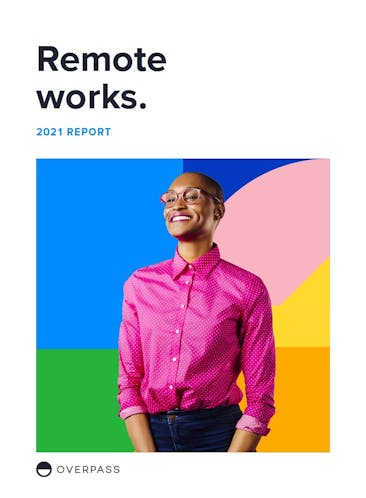Getting early users is one thing, but getting your first paid users is a whole other battle. Finding where you fit in depends on your specific product, how saturated your market is and how you acquire your users in general.
It turns out there are three strategies that were commonly used among the fastest growing B2B startups that turned their early stage users into paying customers.
Lenny Rachitsky, a Founder/CEO and previous PM of Growth at Airbnb, analyzed 25 of the fastest growing B2B businesses to see where they fit relative to one of these three strategies. He found some amazing insights that can help any early stage B2B business find their first paid users and turn them into long term scalable practices.
So what are the three strategies, and how can you use them to grow your business?
- Bottom-up + Self-Driven Upgrade: Users discover your product/service, sign up for a free plan, love it, and upgrade themselves in order to get more functionality.
- Bottom-up + Inside Sales Driven Upgrade: Users discover your product/service, sign up for a free plan, and then are either encouraged by a sales rep (or proactively reach out) to upgrade for more functionality.
- Outbound Sales: Founders or early sales hires reach out to leads, help them trial the product, and then sign them up for a paid plan.
Although some of these companies started with a no-sales (bottom up) approach, eventually every single one of these companies ended up building a sales team. For those that adopted the second and third strategies, many got their first 10 customers with founder-led sales. A few of these companies started with one strategy and later pivoted to another. For example, Zoom and Amplitude started with a sales-driven approach and later moved to a bottom-up, user-driven approach while Box and Relic did the opposite.
The analysis also showed that nearly every single company offered a free tier or a free trial, with quite a few starting before they had any paid plan to upgrade to. Between all 25 companies, there emerged four options for pricing models: a flat monthly fee, a per-seat monthly fee, a usage-based fee, or a transaction fee. Most of the companies analyzed charge a monthly per-seat fee, and sometimes include multiple charges (per-seat + flat monthly fee, or usage-based + flat monthly fee).
Let’s quickly look at a single example from each of the above strategies to help illustrate it in practice:
Bottom Up + Self Driven Upgrade
Figma
- Initial strategy: Bottom-up, self-service
- Eventual strategy: Bottom-up, alongside a sales team
- How they charge today: Per-seat monthly subscription
- Free tier: Freemium
Initially, Figma went the free route with the goal of market share. CEO Dylan Field said they started without any paid plans, expecting that the adoption of Figma would be more rapid if there was no cost as a barrier.
What they learned, however, was that companies wanted to build a tech stack that they could feel secure about, and their non-monetized model left a level of uncertainty as to how long they could be a part of a company’s tried-and-true tools. Figma found that companies would happily pay for their service because they saw its value, and they were willing to invest in the longevity of a tool that they had adopted for their team’s use.
Is this the right strategy for you?
According to growth hacker Sean Ellis, when 40% or more of your user base views your product as essential, you’ve achieved product-market fit and it might be time to monetize. Research your customer base to get a good understanding of what they value most about your product to help define your pricing strategy.
There are some aspects that your users might view as an investment, and others that they may not be willing to pay for. The amount you’re able to charge should also be based on your market and user research: what do competitors offer and for what amount? Do your customers feel that they are getting ROI from your product that justifies what you’re proposing?
You might not nail it the first time, but understanding what your customers love and what they’re willing to pay to ensure your product’s success are foundations of a good scaling strategy.
“We initially started without any paid plans. Our thinking was that it'll spread faster if we don't charge. Eventually though, not paying became the barrier for companies to adopt it, so we started charging.
Timeline wise, we launched a closed beta in December 2015, general availability in October 2016, and we didn't charge until 2017. At the end of 2016, we started hearing from customers "Hey, why aren't you charging, you idiots? I want to pay so that you don't go away." So then we launched our paid plan.
Going from free to paid was fully self-service. I'm sure we were on the phone with some key customers, but I don't remember that as a meaningful part of the conversion process.”
— Dylan Field, CEO
Bottom Up + Inside-Sales Driven Upgrade
New Relic
- Initial strategy: Bottom-up, with inside sales converting early customers
- Eventual strategy: Bottom-up, alongside a sales team
- How they charge today: Per-instance monthly subscription
- Free tier: Trial
An inside sales team can be a helpful asset in guiding a new user towards the best solution for their business, and that’s exactly what New Relic did with their user base. From the beginning, they have always offered a multi-tier product, including a free version and more premium packages available at different price points. They were able to effectively close more sales using the bottom-up approach paired with an inside sales team, where reps would convert users from free or lower packages to better options using discounts and special offers.
New Relic found that a few specific features offered on paid plans were what really helped their sales reps to close more business, and that these might not have been enough to bring users to paid plans in a self-serve model. Having an inside sales team that can explain the value, share case studies, or demo the feature is a great way to upsell to a premium tier.
Is this the right strategy for you?
If you offer multiple versions of your product for different audiences, for example, “Free”, “Standard” “Business” and “Enterprise”, an inside sales team might complement your existing sales efforts nicely. Your free users can be thought of as “warm leads” for the inside sales team to investigate further- what do you know about their use of your product? Can you offer them a limited trial of your “standard” plan to give them more options and features that they would enjoy? The same can be true for your “Business” or “Enterprise” offerings.
An inside sales team might sound costly or hard to implement, but it hardly has to be. Tools like Overpass offer options to quickly hire and train a contract sales team so you can start evaluating the ROI of a bottom-up/ inside-sales approach immediately.
“New Relic has always had a free, feature-limited product along with paid tiers. In the early days the paid tiers were Bronze, Silver, and Gold versions, almost always closed by an inside sales (vs self service) that utilized volume discounting to incentivize deals. The main driver for upgrading to paid was access to a couple killer features, particularly Transaction Traces.
What set New Relic apart from many freemium SaaS businesses of the era was its early success at business development by offering an otherwise paid tier (Standard) as free when obtained through a partner, such as Heroku. It created a nice win-win between New Relic (who got more freemium leads to close) and the partner (who got to offer a thing of value to their customers).
Eventually, in a addition to having a large inside sales team, they added a classic enterprise field sales team, right around IPO.”
— Early user
Outbound Sales
Zoom
- Initial strategy: Founder-led outbound sales (along with early VP of Sales hire)
- Eventual strategy: Bottom-up, alongside a sales team
- How they charge today: Monthly subscription
- Free tier: Freemium
The outbound sales approach is what many people think of when they hear “sales”. Instead of relying on users to find their product based on a need, the founders of Zoom used their connections and a deep understanding of their product and values to pitch their software to companies that could benefit from their services. They were able to close several deals on their own before hiring a VP of Sales to expand their growth efforts.
Zoom has since hired a marketing team and pivoted towards a bottom-up approach, paired with a sales team to close deals. Today they still offer a free version of their product, giving them access to a large B2C market, as well as offering an attractive introduction to businesses wanting to develop familiarity with their tool before committing to a more expensive plan. They also offer a monthly subscription with premium features for more active users and those with advanced needs.
Is this the right strategy for you?
While outbound sales can be effective, it can be hard if you don’t have a clearly defined customer persona. Understanding your target audience, what they value, and the best ways to connect with them is critical when selling to someone who has limited-to-no familiarity with your brand.
The complexity of your product will also factor into how well an outbound sales strategy will work. If your product is difficult to explain or conceptualize without a demo, it will likely be harder to convince your leads that this is something they really need. Knowing what your current customers love the most about your product can help you to develop a pitch that works in an outbound sales strategy.
“Our first deal was Stanford Continuing Studies Group, even before our solution was ready. That gave us huge confidence. At that time, we had no sales team, no marketing team, just the engineers.
To get the first one million ARR is very difficult because nobody knows you. We only had an engineering team. We did not have a marketing team. We did this on purpose. Before we reach one million, we did not want to create a marketing team. Only a sales team.
After our founding team we closed several deals, we hired a VP of Sales and he hired a bunch of the sales guys.
Again, our lead generation I think primarily coming from our organic leads. Our existing happy customers refer to other customers. A lot of freemium product also gives a lot of qualifying leads.”
— Eric Yuan, CEO (source)
No matter what method you use to acquire users and upgrade them to paid customers, it will become a necessary part of your growth strategy to build an inside sales or outbound sales team for your B2B product. The sales talent needed to handle each approach also differs depending on your product, complexity of the campaign, quality of your leads, and number of stakeholders your rep will need to win over.
Whether you’re an early stage company or a massive corporation, hiring a sales team can be challenging, so be sure to consider the best tools for hiring, training, and managing your sales team to ensure your sales efforts are able to rapidly scale and support your business goals.
Are you ready to find the right growth strategy for you? Get access to our webinar with Bill Carmody (TEDx speaker, business leader, and executive coach) to learn how you can quickly grow your own user base.



